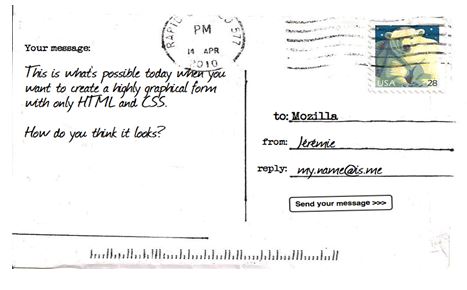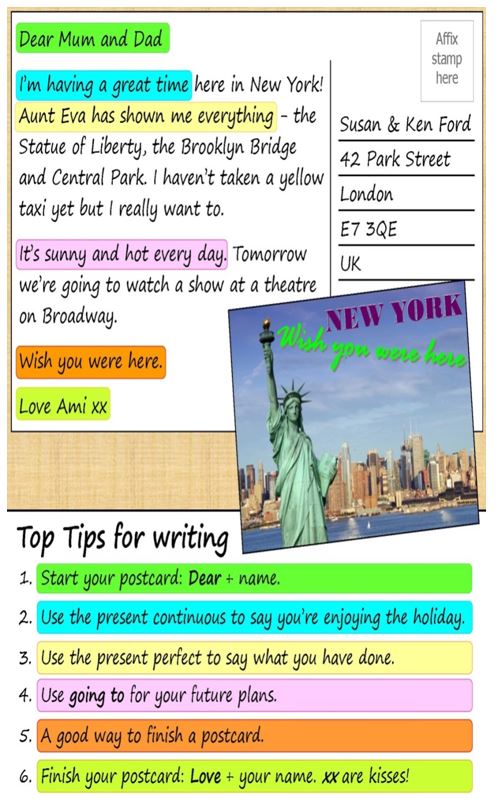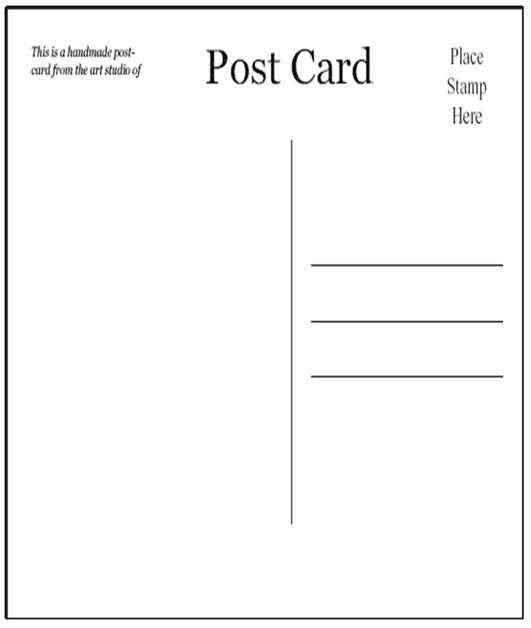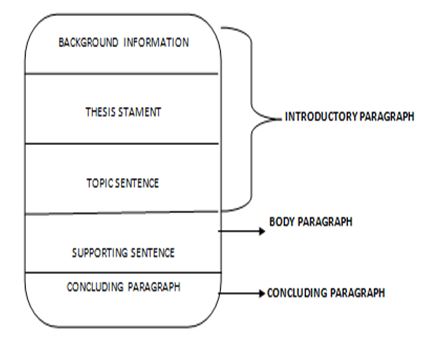
|
|||
|---|---|---|---|
|
|
The general structure of the written text in the development of writing skill: Booklet La estructura general del texto escrito en el desarrollo de la habilidad de escritura: Folleto |
|
|
|
*Universidad de Guayaquil. Facultad de Filosofía Escuela de Lenguas y Lingüística (Ecuador) |
MSc. Lizmary Feriz Otaño* Lic. Svietlana Leonor Sánchez Vera* MSc. Jacqueline López López* MSc. Mónica Lucia Caranqui Quiguango** |
|
|
|
Abstract This document is the result of a research in the Eloy Alfaro public high school related to the insufficiency in the general structure of the written text in this institution. This research was conducted to determine the influence of the general structure of the written text in the writing skill. This project considered the writing skill as a process of abstraction, which enables students to communicate their ideas accurately. A good writing helps to develop on a personal and professional level. For those reasons, the research was conducted through theoretical, empirical and statistical methods. The problem was detected by applying instruments, such as, observation, surveys and the interview to the teacher. In this project, it is assumed a mixed approach, qualitative and quantitative. Once tabulated, analyzed and interpreted the results it was obtained the conclusions and recommendations that came to the design of a booklet of activities in order to provide techniques in a way that it can produce important progress in writing skill. Keywords: General structure. Writing skill. Process of abstraction.
Resumen Este documento es el resultado de una investigación en el colegio público Eloy Alfaro relacionado con la insuficiencia en la estructura general del texto escrito realizado en dicha institución. Se efectuó este proyecto para determinar la influencia de la estructura general del texto escrito en la comprensión escrita. En esta investigación considera la comprensión escrita como un proceso de abstracción que permite a los estudiantes comunicar sus ideas con exactitud y precisión. Una correcta escritura contribuye al desarrollo tanto a nivel personal como profesional. Este proyecto se efectuó a través de métodos teóricos, empíricos y estadísticos. El problema fue detectado por medio de la aplicación de instrumentos tales como observación, encuestas y entrevista al profesor. En esta investigación se asume un enfoque metodológico mixto, cualitativo y cuantitativo. Una vez tabulados, analizados e interpretados los resultados, se obtuvieron las conclusiones y recomendaciones, lo que dio como resultado el diseño de un folleto de actividades el cual provee a los estudiantes de técnicas de tal manera que producirán un progreso importante en la comprensión escrita. Palabras clave: Estructura general. Comprensión escrita. Proceso de abstracción.
Reception: 02/21/2017 - Acceptance: 08/08/2017
1st Review: 07/11/2017- 2nd Review: 08/04/2017
|
|||
|
|
Lecturas: Educación Física y Deportes, Revista Digital. Buenos Aires, Año 22, Nº 231, Agosto de 2017. http://www.efdeportes.com |
|
|
1 / 1
Introduction
Nowadays it is very common to observe in students a low level of writing skill. This problem is due to difficulties to develop different kinds of paragraphs, which compose a written text. In schools, it is not taught to students how to express their thoughts in a logical way through a written work. Writing demands more dedication because we have to write several times before obtaining what someone wants to say. It is necessary to be patient because when you write a text, new ideas come to your mind, which they were not considerate at the beginning.
The writing skill consist of expressing our ideas in an orderly way hence the importance of knowing and managing the general structure of a written text. This project aims to determine the influence of the general structure of the written text in the writing skill. To describe the general structure of the written text, to characterize the writing skill through a literature review, statistical and field analysis, and to design a booklet of activities focused on the general structure of the written text. Students do not produce coherent and clear texts because they have not learnt basic techniques to construct them.
Writing is not easy, but it is not impossible either. It is necessary to have the talent of the written word. Writing has some implications such as thinking before writing. Writing consist of constructing meaningful ideas with words. Written expression involves dealing with a clear handwriting. Applying correctly the grammar rules that share the members of a linguistic community. The best way to learn writing is through reading, to avoid mistakes when writing, it is essential to manage some techniques to achieve a good communication with the reader and learning how to structure a written text correctly is the most important part of writing. This is why the acquisition of the written code is associated with the reading abilities. Because it is important to make an effort to write well because it helps us to develop on a personal and professional level and even more in school life.
Insufficiency in the writing skill in English language. Teenagers express their ideas in an incorrect way, with a poor language. That is why they cannot write properly. It is important to know how to write clear and organized ideas.
A very common problem to write a text is due to lack of knowledge to elaborate different kinds of paragraph composing a written text. The composition of the written text involves the knowledge of grammar, orthography and vocabulary. The students ignore the general structure of a written text. If students do not write in a correct way it could change the sense of the text, consequently the message to the reader is not gotten.
Another causal element is the insufficient didactic materials to work the general structure of the written text. Therefore, that it is considered an important help to develop a positive learning. Besides, it motivates and encourages students to work the writing skill
This problem was detected in students between thirteen and fourteen years-old at the Eloy Alfaro, Public High School; specifically in 10th grade “A”. In order to develop the techniques for the general structure of the written text as topic, different steps were followed (prior appraisal process), as it is stated in Barroso, Calero y Sánchez (2015) and Barroso, Sánchez, Calero, Recalde, Montero and Delgado (2015). First, was determined the general objective, then, it was made a bibliographical research in order to find the theoretical foundations and importance of this topic. Subsequently, it was made a statistical and field analysis, in order to find the reality of the education. As a final point, it was set in a solution to the problem, which was the designing of motivational activities to develop the writing skill. All this process will be explained in this article. The objective of the paper is to determine the influence of the general structure of the written text in the writing skill, through a literature review, statistical analysis, and field analysis to design a booklet of activities focused on the development of techniques for the general structure of the written text.
Development
The theoretical grounds of this topic were developed from different points of view. Epistemological, psychological, pedagogical and legal. Thanks to all these foundations, it was possible to show the importance and relevance of this topic.
Although writing is not considered as important as other skills, writing is what enables us to produce everything we hear, read, and speak.
The parts of the text depend on the type of writing, the general structure of a text consist of three parts: introduction, body of the text and the conclusion. Every literary work must have a beginning, it could be just a paragraph to express briefly the main idea to anticipate the reader what is about to come. An introductory paragraph helps the reader to understand the meaning and the importance of the subject. It states the purpose that prompts us to write.
The body of the text develops the main idea and the writer explain the situation by giving arguments, evidences, testimony of people and specific details, dates, facts, places. It is the essential part of the text and its goal is to inform, to analyze, to convince, to stimulate, to request, to entertain, etc. The body can consist of several paragraphs all of them linked by the main topic which provides cohesion to the text.
The conclusion is the set of phrases which indicates us the end of the text. The conclusion indicates that the presentation, the explanation, or the exposition has been completed intentionally. To create this feeling of satisfactory end, the writer can use three types of ending. First, the conclusion which refers to the value of the evidences collected. A second conclusion that summarize the relevant points of the body. And finally, a third conclusion which suggests the action to follow as a result of the explanation. The lack of this structure creates confusion and it produces the wrong effect in readers (Ortega, 1985).
The characteristics of a text are coherence and cohesion. In a coherent text, the main topic must be linked to the phrases of the paragraph, maintaining an adequate relation between them. Coherence also involves the management of style; it consists of accuracy, clarity, originality, simplicity and fluency. To achieve a coherent paragraph the topic of the phrases must be tied, and in order to keep a logical relation it is important to pay attention to the verb tenses (Sierra, 2006).
In any act of communication, the message depends on the intention and the situation. A phrase may express different messages: an order, a feeling, and a question, depending on the communicative intention. On the other hand, the communicative situation is about the circumstances: time, place or people who transmits the message. In conclusion, the communication will be finished with the reception of the message and in fact, this act defines the text function (Nord, 2005).
In the process of communication, the participants are as important as the action. The principal function of a text is to establish a communication between the sender and the receiver. Getting a message depends not only on the receivers’ expectation but also on the context and the need of communication.
In a written text, there are some topics like the structure of the text, issues of a letter and word that are showed through the handwriting, spelling and layout and punctuation. An incorrect spelling does not affect the understanding of a written text but in fact, it shows that a person is not well educated. One of the reason that students have problems with spelling is because a phoneme can has different spellings. Another difficulty is that the spelling varies depending on English (American or British English). For this reason, it is important to focus only in a variety of English but they have to be conscious of the existence of other options (Harmer, 2001).
Some punctuation and layout conventions are different in some communities. In English, there are punctuation conventions that belong only to this language, for example: the pronoun I, capitalization of months and days of the week. Even if punctuation is considered an issue of personal style, many people could find it clumsy if rules are not followed. To be a good writer it is important to learn about these different layouts and how to use them in a proper way in order to transmit the message as clearly as possible. (Harmer, 2001).
Writing is not only to have a final product. It involves some stages: planning (Pre-writing), drafting, revising, and editing. Teachers have to teach this structure and it cannot change at least at the beginning. They have to support the classroom with some activities and students must follow the plan (Seow, 2002).
Planning or pre-writing is the stage where students are encouraged to write. It is important to stimulate their thoughts in order to get started. They think about the possible ideas for writing and they start searching for information. Students can learn at this stage through activities such as:
-
Brainstorming. Where learners produce ideas spontaneously about the subject. It does not matter if they are right or wrong.
-
Clustering. Is an effective strategy where students link the words to make them discernible clusters?
-
Rapid free writing. Is another technique. When brainstorming cannot be done or a specific subject requires another strategy we resort to this activity where students have one or 2 minutes to write down in a free and quickly very some words or phrases about the topic.
-
Wh-questions. Question words like where, who, why, what and how are made about the topic. Students can continue doing these questions indefinitely even after the first sequence of wh-questions.
Writing genres
According to the purpose of writing, we note the following genres: narrative, descriptive, persuasive and expository. When students write a text, it is important to learn to distinguish the different genres, and not to name all texts as “stories”.
In the narrative genre, students tell a story about their family, real events and they can create an original text. They develop the story with characters that have to be described in a specific time and space. In descriptive genre, students have to manage a descriptive language to write details, characteristics, comparisons in order to give a strong effect to their text. In the persuasive genre, the writer shows a clear posture and gives all kind of arguments to convince the reader. The expository is used to present information and data. The writer has to be objective to expose problems and solutions, to describe causes and effects and to compare different ideas (Tompkins, 2010).
Writing approaches
To teach writing there are the following approaches: product-based approach, process-based approach and genre-based approach.
Product based approach
Product-based activities are just about copying and imitating a model especially at sentence-level, because it is believed that learners have to master the forming sentences and grammar before writing well-structured paragraphs.
Nowadays, teachers prefer focus on the process because it is known that proficient writers do not produce a final work at the first try. To obtain a well done product it is necessary to write several drafts. In this approach, the attention is focus on the quantity instead of quality, and the only goal is to get the final text without paying attention on writing conventions (Nunan, 1991).
Process based approach
This approach is focused on the four basic stages of writing: planning (pre-writing), drafting, revising and editing. This process is taught in the classroom in a very structured way and it cannot allow a variant form of writing stages at least at the beginning. It is important the students make the different stages to understand that they are expected to have a product in each stage, achieving particular aims at every writing stage (Seow, 2002).
Genre based approach
Through genre-based approach, students learn how to communicate many kinds of events with samples of specific genres. It is important to know the genres and to analyze the context of each situation in order to use the proper linguistic characteristic that are needed. It is thought that students learn by exploration and imitating different models of genres. To write a particular genre learners are showed many times the same genre to create the ability of writing (Kim, n.d.).
Besides, ideas can come from multimedia resources, and from surveys, interviews, talks, etc. Providing extra information will be motivating for students during this stage (Seow, 2002).
After gathering enough ideas at the earlier stage, the writer continues immediately with drafting stage. Neatness or grammatical accuracy must not be a concern in this stage, it is better to concentrate on the fluency of writing. One aspect of a good writing is the skill of the writer to imagine an audience. A specific style can be used depending on the audience. To give a correct direction of the writing it is important to keep in mind the main idea that they want to communicate (Seow, 2002).
In this stage the writer, reexamine the written text in order to make sure, if the main idea of the message has been communicated. The objective of revising is to improve the global content and the structure of ideas instead of checking grammatical errors. An activity for revising could be to work in pairs and read aloud the text. When students listen to their own writing, they get conscious about their mistakes. Ideas that are vague become more obvious when hearing their own work. Another option is to record on a tape and then to take dictation. This way they can detect where they need to make changes (Seow, 2002).
When editing the writer refine the final text. The edition consist of working for grammar, punctuation, spelling, accuracy and the structure of material that supports the text like examples and quotations. The application of normal editing is done at this stage in order not to interrupt the spontaneous course of ideas while drafting and revising. We can found some errors by asking about: the correct tense of verbs, the correct form of the verbs, subject-verb agreement, the correct prepositions, and the use of articles required, the correct use of pronouns, the appropriate use of adverbs and adjectives, and finally the writing of complete sentences. Even if the student does not know how and where do the corrections, editing has to become a habit before presenting the text. This process of editing is relevant because correcting the text assures us that the reader will receive the clear message (Seow, 2002).
According to the purpose of writing, the authors note the following genres: narrative, descriptive, persuasive and expository. When students write a text, it is important to learn to distinguish the different genres, and not to name all texts as “stories”.
It is necessary to know how writing is learnt, and to understand it Vygotski (1986) notes that “The essential difference between written and oral speech reflects the difference between two types of activity, one of which is spontaneous, involuntary, and nonconscious, while the other is abstract, voluntary and conscious” (p. 183). This conception allows the authors to comprehend more about this skill. An analytical action and concentration are much needed since the writer requires double abstraction: from the person to make a dialogue and from the speech sounds (Vygotski, 1986). According to these definitions, it is concluded, that learning to write involves a series of commitments and it means that writers have to follow a process.
The topic of how knowledge is formed is also relevant for this investigation, for which it is explained that it existed two movements predominated over a long period.
The idea that knowledge was inside of human beings and we only needed to activate them for them to emerge (innatism); and the thinking that considered the knowledge was outside and it had to be carried inside as if it were a copy that it had to be impregnated in the human brain (empiricism). (Pimienta, 2007, p. 8)
The constructivism has a conception between innatism and empiricism, crediting Jean Piaget, the father of cognitivism. The idea of the constructivist approach is to teach how to think and to act about meaningful and contextual contents (Díaz & Hernández, 2010).
According to the Philosophy of Language, philosophical discipline that treats the language of a culture as a fundamental part to the development of communication.
Philosophy of language is, above all, the midwife of the scientific study of language use. By language, I mean both natural language like English, and invented languages like those of logic and mathematics. By language use, I mean its private use in thought as well as its public use to communicate thoughts (Soames, 2010, p.1)
It is also important to note the meaningfulness of language that is generally drawn by philosophers like a triangle and whose lines connect world, mind and language. They are essential to understand the reality and our place in it (Crimmins, 2015). In philosophy, the role of language can be easily explain with an example:
A philosopher is interested in the nature of value; they want to know what goodness is. Language enters when they observe that goodness is what is attributed when we say of a thing that it ‘is good’. Therefore, the philosopher focuses on certain statements, and seeks an understanding of what such statements mean and in general of how they work. They explore whether such statements are ever objectively true or false, whether their truth or aptness varies from speaker to speaker, whether a satisfying explanation of them entails that the word ‘good’ refers to or expresses a genuine characteristic (of actions, states of affairs, persons, and so on), and how their meaning relates to the distinctive sorts of endorsement that such statements commonly convey. (Crimmins, 2015 p.78)
Furthermore, about the philosophy of language Blackburn (2015) states that the written text is a type of language, it has that characteristic, which is to connect thoughts, feelings and ideas with the world, that is, its main function is to communicate. Through written language, for instance, texts, the writer satisfies the need to make contact-stating ideas that transmit a message. Written language is the main link for communication.
Students are main actors in the process of academic training; therefore, it is needed to create a proper environment, supported in values to educate students with responsible criteria in order to build a better life.
Another important concept considered for this project is the axiology in teacher education. Our behavior is guided by values; they decided about what is good, right or true. It is for this reason that they depend on our thoughts and feelings. Through values we distinguish right from wrong, we define our beliefs, the meaning of work and self-respect. Education based in values is important because it gives the students necessary tools to get a profession and an objective to follow in life. A value-based education is essential to be tolerant, peaceful, to have a correct conduct in society, intercultural respect and justice (Tomar, 2014).
It results relevant for this analysis the axiological conception in teaching education. Because teachers have a determinant influence in developing students’ personality, teachers have to be aware about their own values, what values they want to transmit and how they can do it. Written language is a way of communication and through this skill; teachers can suggest, contribute and facilitate to create necessary conditions for the students to develop values by means of their experiences.
This is why axiology plays a very important role in teaching education and it gives an ethical sense to the work of a teacher.
All these authors reinforce the idea of the investigators that the general structure of the written text furthermost is developed in order to better up the writing skill. The application of techniques for the general structure will solve the problem found in the students from tenth grade from Eloy Alfaro Public High School.
Methodological design
The investigation adopted a mixed approach in the view of the fact that it does not exist dichotomy between the qualitative and the quantitative in the process of the scientific investigation.
Theoretical methods
-
Analysis and synthesis: It has been decomposed the matter of examination, in this case the writing skill, to identify the possible causes that affect it. Each part was studied in an individual way and then a synthesis was carried out to evaluate in an integral form.
-
Inductive-Deductive method: This method was used to collect information about the improvement of writing skill for the design of some activities. Besides, it was observed that the application of the general structure in a correct way helps to develop the writing skill.
-
Systematic-structural-functional method: This method was used to model the proposal so that all the parts (objectives, methodological orientation, and chart of content) are interrelated to form a system.
-
Logical-Historical Method: Essentially for the analysis of the study background.
Empirical methods
The authors made use of empirical instruments beginning with the Observation: Which allows to detect and assimilate the information found in the selected context for a record of certain facts through a physical document as the observation guide This observation has a structured type that reveals the most relevant aspects of the investigation.
-
Interview: It was applied to determine the main causes that affect the writing skill in the English determining that the general structure of a written text influencing the writing skill.
-
Survey: It was applied to determine the influence of the general structure of a written text in writing skill.
Mathematical-statistical method
-
Mathematical-Statistical Analysis: Through this method was possible to collect statistical information, which can be observed in tables and graphs that allowed highlighting the difficulties and strengths found in each evaluated criteria
-
Chic Square: It was used to prove the relation between the two variables studied.
In order to find the actuality of the education and to show the relevance of the topic, it was applied different investigation instruments. Those instruments were: a survey, an interview and an observation guide. The result of each instrument will be enlightened in the next paragraphs.
The analysis of the observation guide showed that students did not apply the writing stages in writing exercises; they did not check the texts have cohesion and coherence. The general structure of the written text was not emphasized and there was a lack of didactic resources to improve writing skill.
Analysis of the survey addressed to the learners
Table 1
1. It is important to know the genres of a written text
Totally disagree
3
Disagree
2
Neither Agree nor Disagree
9
Agree
7
Totally Agree
7
Total
28
Source: Students from Eloy Alfaro School
Comment: From the twenty-eight students surveyed, three students (11%) totally disagree They think it is not important to know the genres of a written text, two students (7%) disagree, nine students (32%) neither agree nor disagree, seven students (25%) agree and finally seven student (25%) totally agree. Concluding that students think it is important to know the genres of a written text.
Table 2
2. The punctuation marks are not necessary to write a formal letter
Totally disagree
7
Disagree
6
Neither agree nor disagree
4
Agree
8
Totally agree
3
Total
28
Source: Students from the Eloy Alfaro School
Comment: seven students (25%) totally disagree, six (21%) disagree, four (14%) neither agree nor disagree, eight students (29%) agree and three (11%) students totally agree. Concluding that they think the punctuation marks are not necessary.
Table 3
3. To redact a text the first step is to write directly about it
Totally disagree
5
Disagree
3
Neither agree nor disagree
7
Agree
9
Totally Agree
4
Total
28
Source: Students from the Eloy Alfaro School
Comment: five students (18%) totally disagree, three students (11%) disagree, seven students (25%) neither agree nor disagree, nine students (32%) agree and eleven students (14%) totally agree, showing that the most of students neither agree nor disagree with the statement when they redact a text.
Table 4
4. A written text is composed by two parts
Totally disagree
2
Disagree
1
Neither agree nor disagree
14
Agree
3
Totally agree
8
Total
28
Source: Students from the Eloy Alfaro School
Comment: two students (7%) totally disagree, one student (3%) disagree, fourteen students (50%) neither agree nor disagree, three students (11%) agree, eight students (29%) totally agree. Concluding that they do not know the parts of a text.
Table 5
5. The text has a communicative function
Totally disagree
11
Disagree
6
Neither agree nor disagree
1
Agree
4
Totally agree
6
Total
28
Source: Students from the Eloy Alfaro School
Comment: eleven students (39%) totally disagree, six students (22%) disagree, one student (4%) neither agree nor disagree, four students (14%) agree and six students (21%) totally agree. Concluding that they do not know much about the structure of a written text.
Table 6
6. Which is the facility that you have when you write a text
Bad
7
Regular
7
Good
5
Very good
7
Excellent
2
Total
28
Source: Students from the Eloy Alfaro School
Comment: Seven students (25%) are bad, seven students (25%) are regular, five students (18%) are good, seven students (25%) are very good and two students (7%) are excellent. The results clearly show that it exists deficiency in the writing ability.
Table 7
7. A booklet of activities and techniques to write a text help to improve writing ability in students
Totally disagree
2
Disagree
1
Neither agree nor disagree
3
Agree
13
Totally agree
9
Total
28
Source: Students from the Eloy Alfaro School
Comment: Two students (7%) totally disagree, one student (4%) disagree, three students (11%) neither agree nor disagree, thirteen students (46%) agree and nine students (32%) totally agree. Concluding that most of the population showed interest in having a didactic resource to work the general structure in writing ability
Table 8
8. Working with didactic resources motivates the students to produce a creative text
Totally disagree
3
Disagree
4
Neither agree nor disagree
2
Agree
7
Totally agree
12
Total
28
Source: Students from the Eloy Alfaro School
Comment: Three students (11%) totally disagree, four students (14%) disagree, two students (7%) neither agree, seven students (25%) agree and twelve students (43%) totally agree. Students showed that they have interest in working with didactic resources to improve writing ability.
Table 9
9. How often do you use the general structure of the written text
Never
9
Rarely
5
Sometimes
6
Almost always
4
Always
4
Total
28
Source: Students from the Eloy Alfaro School
Comment: Nine students (32%) chose never, five students (18%) chose rarely, six students (22%) chose sometimes, four students (14%) chose usually and four students (14%) chose always. The results show a serious problem and a deficiency in writing ability concluding that this project is pertinent and applicable.
Table 10
10. You do compositions in class
Never
6
Rarely
10
Sometimes
8
Almost always
3
Always
1
Total
28
Source: Students from the Eloy Alfaro School
The analysis of the survey showed that students have a low level in the writing skill. This deficiency is caused by the inadequate applications of techniques for the general structure of written texts. In addition, they showed interest in having a didactic resource to help them improve with their writing skill. The result was that 78% of the students strongly agreed with the statement. It shows how important it is for the students.
Teachers also agreed with them. In the interview, the teacher said that the implementation of a booklet of activities would be helpful, because the writing skill is not enough developed. Sadly, they do not have an extra material that help them to improve this skill.
According to the interview, the teacher considers that it exists a serious shortcoming in writing texts. Students are not used to write because they do not know how to do it. They are even afraid of it. Students do not have a guide, which provides techniques to write texts in an easy and enjoyable way. This is why the teacher was glad that with the idea of a booklet of activities to improve the writing skill, and requested to have a copy of the activities that this project will present.
Results
For the explained reasons above, the booklet is needed and directed to teachers who are willing to emphasize how important is to write a well-structured text since it is useful in all fields both personal and professional. Since the written communication is important because through a text we can share knowledge, arguments, opinions, we can persuade or not the reader about the context of the text. It becomes important to manage this skill. A good written communication includes a clear expression of ideas but it also includes organization and structure. A written text can be confused or inefficient if it is not well structured, hence the importance of knowing how to write a text.
Besides, it is a way to encourage teachers in the use of suitable activities for their classes, to growth their creativeness to change those activities in the best way they think, and to help students to improve their writing skills. This booklet is composed by three units in which content it is found techniques focused on development for the general structure of the written text like a tool that helps to complement the learners’ study.
In the first unit it is included the explanation of the structure of a formal and informal letter. The second unit have the explanation of the structure of a post card and the last unit contains the explanation of the structure of a composition. All the units contain different kinds of activities that refer to practice each topic.
Conclusions
-
Students do not know how to write a text.
-
Students do not use the general structure of a text in a correct way.
-
The teacher does not have a didactic material to work the writing skill.
-
It exists a necessity to improve the writing skill.
-
The teacher and students conclude that it is essential a booklet of activities to practice the general structure of a written text to improve the writing skill.
Bibliography
-
Barroso, G., Calero, S., & Sánchez, B. (2015). Evaluación Ex ante de proyectos: Gestión integrada de organizaciones de Actividad Física y Deporte. Quito, Ecuador. Editorial de la Universidad de las Fuerzas Armadas ESPE.
-
Barroso, G., Sánchez, B., Calero, S., Recalde, A., Montero, R., & Delgado, M. (2015). Evaluación exante de proyectos para la gestión integrada de la I+ D+ i. Experiencia en universidades del deporte de Cuba y Ecuador. Lecturas: Educación Física y Deportes, 20(204), 323-9. http://www.efdeportes.com/efd204/evaluacion-de-proyectos-en-universidades-del-deporte.htm
-
Blackburn, S. (2015). Philosophy of language. Retrieved from http://www.britannica.com/topic/philosophy-of-language
-
Crimmins, M. (2015). Philosophy of language. Retrieved from https://www.rep.routledge.com/articles/language-philosophy-of
-
Díaz, F. & Hernández, G. (2010). Estrategias docentes para un aprendizaje significativo: Una interpretación constructivista. (3rd. ed.). Mexico: Mc Graw-Hill.
-
Harmer, J. (2001). The practice of English language teaching. (3rd ed.). England: Pearson Education Limited.
-
Kim, S. (n.d.). Genre-based approach to teaching writing. Retrieved from http://www.hpu.edu/CHSS/English/TESOL/ProfessionalDevelopment/200680TWPfall06/07Kim_Genre.pdf
-
Nord, C. (2005). Text analysis in translation: Theory, methodology and didactic application of a model for translation-oriented. (2nd ed.). New York: Rodopi B. V.
-
Nunan, D. (1991). Language teaching methodology: A textbook for teachers. Retrieved from file:///C:/Users/Usuario/Downloads/Language_Teaching_Methodology__Nunan.pdf
-
Ortega, W. (1985). Redacción y composición: Técnicas y prácticas. México: Mc Graw-Hill.
-
Pimienta, J. H. (2007). Estrategias para aprender a aprender. (3rd ed.). Mexico: Pearson Prentice Hall.
-
Seow, A. (2002). Teaching writing. In J. Richards & W. Renandya (Eds.), Methodology in language teaching. (pp.315-320). Cambridge: Cambridge University Press.
-
Sierra, G. M. (2006). El poder del lenguaje: Escribir bien. (1st ed.). Colombia: Ediciones Culturales Internacionales.
-
Soames, S. (2010). Philosophy of language. New Jersey: Princeton University Press.
-
Tomar, B. (2014). Axiology in teacher education: Implementation and challenges. Journal of Research & Method in Education. Volume 4, Issue 2 Ver. II. Retrieved from http://www.iosrjournals.org/iosr-jrme/papers/Vol-4%20Issue-2/Version-3/H04235154.pdf
-
Tompkins, G. E. (2010). Writing genres. Retrieved from http://www.education.com/reference/article/writing-genres/
-
Vygotski, L. (1986). Thought and language. United States: The MIT Press.
Attachments
Unit 1
Structure of a formal letter
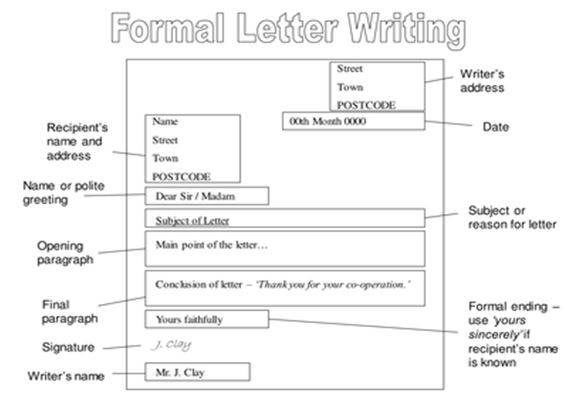
Your address
The return address should be written in the top right-hand corner of the letter.
The address of the person you are writing to
The inside address should be written on the left, starting below your address.
Date
Different people put the date on different sides of the page. You can write this on the right or the left on the line after the address you are writing to. Write the month as a word.
Salutation or greeting
1. Dear Sir or Madam,
If you do not know the name of the person you are writing to, use this. It is always advisable to try to find out a name.
2. Dear Mr Jenkins,
If you know the name, use the title (Mr., Mrs., Miss or Ms., Dr., etc.) and the surname only. If you are writing to a woman and you do not know if she uses Mrs. or Miss, you can use Ms., which is for married and single women.
Ending a letter
1. Yours faithfully
If you do not know the name of the person, end the letter this way.
2. Yours sincerely
If you know the name of the person, end the letter this way.
3. Your signature
Sign your name, then print it underneath the signature. If you think the person you are writing to might not know whether you are male or female, put your title in brackets after your name.
Content of a Formal Letter
First paragraph
The first paragraph should be short and state the purpose of the letter- to make an enquiry, complain, request something, etc.
The paragraph or paragraphs in the middle of the letter should contain the relevant information behind the writing of the letter. Most letters in English are not very long, so keep the information to the essentials and concentrate on organizing it in a clear and logical manner rather than expanding too much.
Last Paragraph
The last paragraph of a formal letter should state what action you expect the recipient to take- to refund, send your information, etc.
Structure of an informal letter

(First name only of a friend)Dear
Paragraph 1 - Say why you are writing to them (I’m just writing to let you know that….)
Paragraph 2 - Bullet point 1 and supporting details
Paragraph 3 - Bullet point 2 and supporting details
Paragraph 4 - Bullet point 3 and supporting details
Looking forward to hearing from you soon.
All the best
(Your first name only)
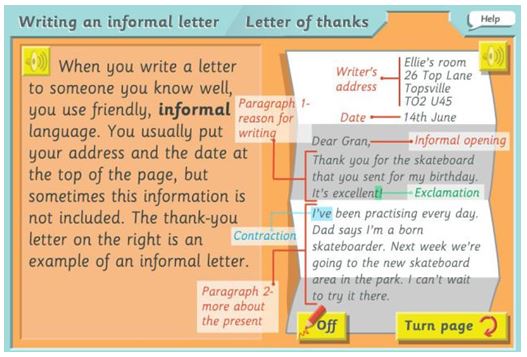
Activities to practice the structure of the formal and informal letters
1. Imagine the situation and write a formal letter applying the correct structure:
Your boss is abroad and there were some problems in the office so you have to write to your boss to inform about the situation (75 words).
___________________________________________________________________________________________________________________
___________________________________________________________________________________________________________________
___________________________________________________________________________________________________________________
___________________________________________________________________________________________________________________
___________________________________________________________________________________________________________________
2. Write 2 characteristics of a formal letter.
1. ___________________________________________________
2. ___________________________________________________
3. Write 2 characteristics of an informal letter.
1. ___________________________________________________
2. ___________________________________________________
Unit 2
Structure of a postcard
1. Salutation/ Greeting: The name of the person who receives the message.
2. Body: The message included on the postcard.
State where you are and what it is like (include your feeling).
Write a sentence about the accommodation.
Describe the weather.
Describe things you did that you enjoyed.
Describe what you have done.
Future Plans.
3. Closing: A last word or two to reader at the end of the message.
4. Signature: sender’s name.
Activity to practice the structure of a postcard
Write a postcard to your best friend.
Unit 3
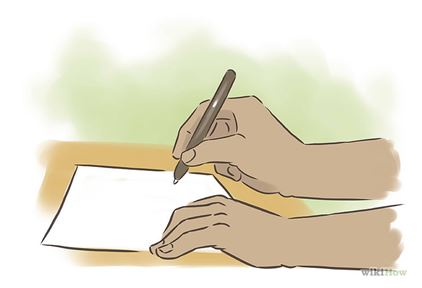
Structure of a composition
Introduction
Arouse the reader’s interest.
Set the scene.
Explain how you interpret the question set.
Define or explain key items if necessary.
Identify the issues that you are going to explore.
Give a brief outline of how you will deal with each issue, and in which order.
Argument/main body
Contain the points outlined in your introduction, divided into paragraphs:
Paragraph 1
Covers the first thing you said you would address.
The first sentence (the topic sentence) introduces the main idea of the paragraph.
Other sentences develop the topic.
Includes relevant examples, details, evidence, quotations, and references.
Paragraph 2 and other paragraphs
The first sentence links the paragraph to the previous paragraph then introduces the main idea of the paragraph.
Conclusion
Draw everything together.
Summarise the main themes.
State your general conclusions.
Make it clear why those conclusions are important or significant.
Do not introduce new material.
In the last sentence, sum up your argument very briefly, linking it to the title.
Suggest further questions of your own
Activities to develop the structure of a composition
Topic: Touristic places
1. Write a thesis statement for the topic.
___________________________________________________________________________________________________________________
___________________________________________________________________________________________________________________
___________________________________________________________________________________________________________________
2. Write a supporting sentence about the same topic.
___________________________________________________________________________________________________________________
___________________________________________________________________________________________________________________
___________________________________________________________________________________________________________________
3. Write a concluding sentence for the topic.
___________________________________________________________________________________________________________________
___________________________________________________________________________________________________________________
___________________________________________________________________________________________________________________
4. Write a composition about your first day at school and underline the thesis statement, the supporting sentence and the concluding sentence (70 words).
___________________________________________________________________________________________________________________
___________________________________________________________________________________________________________________
___________________________________________________________________________________________________________________
___________________________________________________________________________________________________________________
___________________________________________________________________________________________________________________
___________________________________________________________________________________________________________________
Another articles in English

|
|
|---|---|
|
EFDeportes.com, Revista Digital · Año 22 · N° 231 | Buenos Aires,
Agosto de 2017 |
|
